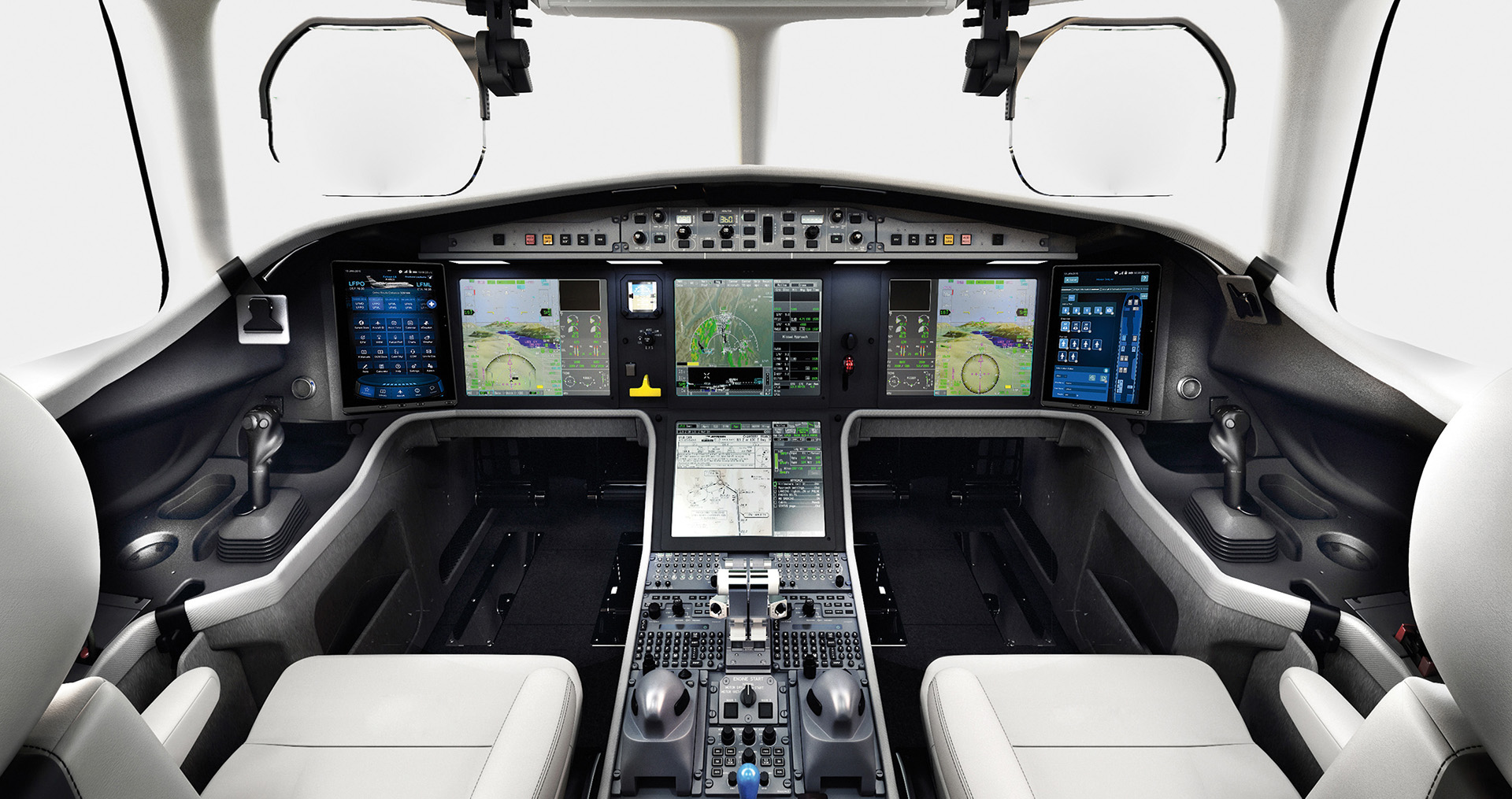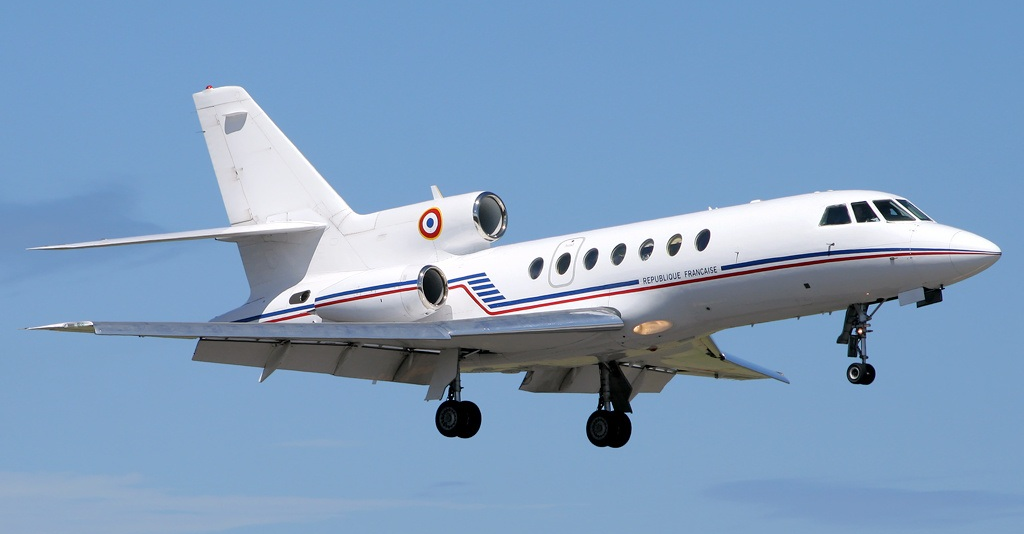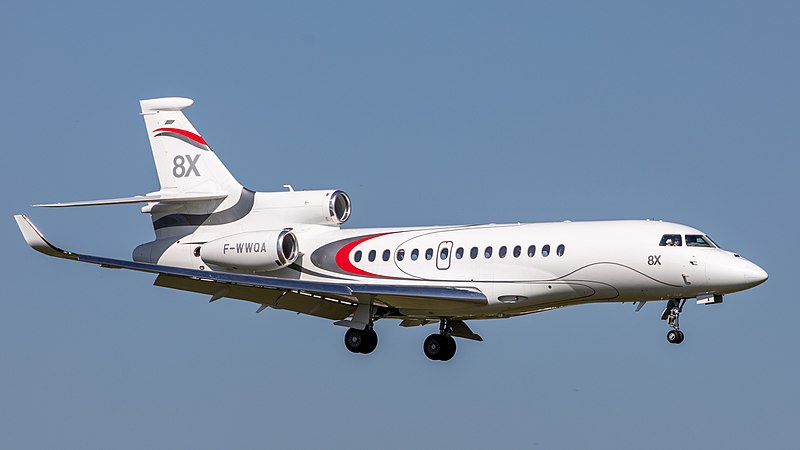
Symmetry Flight Deck Vs. EASy IV Flight Deck: A Comparative Study of Advanced Avionics Systems
Advanced avionics systems have become the cornerstone of modern aviation, profoundly impacting the industry by augmenting flight safety, operational efficiency, and situational awareness for pilots. By harnessing cutting-edge technology, avionics systems like the Symmetry Flight Deck and the EASy IV Flight Deck are pioneering a new era in business aviation. These systems integrate a myriad of features that streamline flight management, enhance navigation accuracy, and provide comprehensive visual feedback, making air travel safer and more efficient.
This comparative analysis between the Symmetry Flight Deck and the EASy IV Flight Deck, elucidating their unique attributes, design philosophies, and performance metrics. Understanding the distinctions and similarities between these advanced avionics systems provides insight into their significance in the evolving landscape of aviation technology.
EASy IV Flight Deck: An Overview
Available on the Dassault Falcon 6X, 7X, and 8X models, the EASy IV Flight Deck represents a significant leap forward in avionics technology. Like the Symmetry Flight Deck, it is also based on the Honeywell Primus Epic platform.
Design
The EASy IV Flight Deck features conventional yokes, which are mechanically linked and provide visual feedback to the pilots. It has six touch-screen displays arranged in a U-shape, offering interactive navigation and communication features.
Performance
The enhanced FMS of the EASy IV Flight Deck supports RNP AR approaches, interactive vertical situation displays, and airport moving maps. The combined vision system integrates synthetic vision and enhanced vision into a single display, providing a comprehensive view of the flight environment. The TCAS system with ADS-B In and Out shows traffic information on the navigation and airport moving maps.
Symmetry Flight Deck: An Overview

Symmetry Flight Deck:
Offered on Gulfstream's G500, G600, G700, and G400 models and the upcoming G800 model, the Symmetry Flight Deck is a testament to technological ingenuity. It leverages the Honeywell Primus Epic platform, offering features that set new standards in the aviation industry.
Design
Active control sidesticks characterize the revolutionary design of the Symmetry Flight Deck, providing tactile feedback to pilots. It is fitted with ten high-resolution touch-screen displays arranged in a T-shape, offering intuitive access to various flight data and functions.
Performance
The Symmetry Flight Deck boasts a next-generation flight management system (FMS) that supports RNP 0.1 and LPV approaches. It also offers graphical flight planning and performance optimization. The synthetic vision system provides a 3D view of the terrain, obstacles, and runway environment, enhancing situational awareness. The TCAS system with ADS-B In and Out displays traffic information on the navigation map and the synthetic vision display.
Comparative Analysis: Symmetry Flight Deck Vs. EASy IV Flight Deck
While having similar foundations, the Symmetry Flight Deck and the EASy IV Flight Deck differ in features, design, and performance.
Control System
The Symmetry Flight Deck is equipped with active control sidesticks, while the EASy IV Flight Deck uses conventional yokes. This difference in control systems influences how pilots interact with the aircraft, affecting their overall flight experience.
Display System
The Symmetry Flight Deck has ten touch-screen displays, whereas the EASy IV Flight Deck has six. The arrangement of the displays also varies — the Symmetry Flight Deck's displays are arranged in a T-shape, while those in the EASy IV Flight Deck are in a U-shape.
Flight Management System
The FMS of the Symmetry Flight Deck and the EASy IV Flight Deck offer different capabilities. The Symmetry Flight Deck's FMS supports RNP 0.1 and LPV approaches, along with graphical flight planning and performance optimization. In contrast, the EASy IV Flight Deck's FMS supports RNP AR approaches, interactive vertical situation displays, and airport moving maps.
Vision System
The Symmetry Flight Deck features a synthetic vision system, whereas the EASy IV Flight Deck has a combined vision system. This difference results in varying levels of situational awareness provided by the two systems.
Traffic Information System
Both the Symmetry Flight Deck and the EASy IV Flight Deck have a TCAS system with ADS-B In and Out. However, the display of traffic information differs. The Symmetry Flight Deck shows traffic information on the navigation map and the synthetic vision display, while the EASy IV Flight Deck presents it on the navigation map and the airport moving map.
|
Feature/Aspect |
Symmetry Flight Deck |
EASy IV Flight Deck |
|---|---|---|
|
Models Offered On |
Gulfstream's G500, G600, G700, G400, upcoming G800 |
Dassault Falcon 6X, 7X, 8X |
|
Design |
- Active control sidesticks |
- Conventional yokes |
|
- 10 high-resolution touch-screen displays (T-shape) |
- 6 touch-screen displays (U-shape) |
|
|
Performance |
- Supports RNP 0.1 and LPV approaches |
- Supports RNP AR approaches |
|
- Graphical flight planning and performance optimization |
- Interactive vertical situation displays and airport moving maps |
|
|
Vision System |
- Synthetic vision system |
- Combined vision system (synthetic and enhanced vision) |
|
Traffic Information System |
- TCAS with ADS-B In and Out, displays on navigation map and synthetic vision display |
- TCAS with ADS-B In and Out, displays on navigation map and airport moving map |
|
Foundation Platform |
Honeywell Primus Epic |
Honeywell Primus Epic |
This table format succinctly encapsulates the comparative analysis between the two flight decks across various features and aspects, making it easier for readers to grasp the distinctions and similarities at a glance.
The Future of Avionics Systems
The Symmetry Flight Deck and the EASy IV Flight Deck are innovative avionics systems that significantly enhance the piloting experience. While they share a common platform and aim to improve safety and efficiency, they offer unique features and capabilities that differentiate them. The choice between these systems will ultimately depend on the specific requirements of the pilots and passengers. As avionics technology continues to evolve, we can expect to see more advanced systems that push the boundaries of what's possible in the aviation industry.
Technical terms :
- RNP 0.1 (Required Navigation Performance 0.1):
- Required Navigation Performance (RNP) is a performance-based navigation (PBN) type that allows an aircraft to fly a specific path between two 3D points in space. The value "0.1" refers to the navigational accuracy required, in this case, 0.1 nautical miles. This high level of accuracy ensures that the aircraft stays within a specific containment area around the intended flight path.
- LPV (Localizer Performance with Vertical guidance):
- LPV is an approach procedure based on Wide Area Augmentation System (WAAS) GPS signals. It provides both lateral (horizontal) and vertical guidance to pilots during the approach to a runway, similar to the guidance provided by traditional Instrument Landing System (ILS) approaches, but without the need for ground-based navigational aids. This system significantly improves safety, especially during adverse weather conditions or at airports lacking advanced ground-based navigational aids.
- RNP AR (Required Navigation Performance Authorization Required):
- RNP AR is a more advanced form of RNP, requiring both the aircraft and aircrew to be authorized by aviation authorities due to the higher precision and operational demands. RNP AR procedures allow aircraft to fly precisely defined paths without relying on ground-based navigation aids, enabling more efficient and safe operations, especially in challenging or congested airspace.
CAS (Traffic Collision Avoidance System):
- TCAS is an onboard system designed to reduce the risk of mid-air collisions between aircraft. It monitors the airspace around an aircraft for other aircraft equipped with a corresponding active transponder, independent of air traffic control, and warns pilots of the presence of other transponder-equipped aircraft that may present a threat of mid-air collision.
- ADS-B (Automatic Dependent Surveillance-Broadcast):
- ADS-B is a surveillance technology in which an aircraft determines its position via satellite navigation and periodically broadcasts it. Air traffic ground stations and other aircraft can receive this information to provide situational awareness and information for collision avoidance.
- ADS-B In and Out:
- ADS-B Out: This function broadcasts the aircraft's position, velocity, and other information to ground stations and other aircraft, aiding in situational awareness and flight safety.
- ADS-B In: This function receives the data broadcasted by other aircraft and ground stations, providing the pilot with a real-time display of air traffic in the surrounding airspace. It can also receive important flight information, such as weather updates, crucial for flight safety and efficient routing.
The integration of TCAS with ADS-B In and Out enhances situational awareness and safety by providing pilots with real-time traffic information and collision avoidance advisories, which is crucial, especially in congested airspaces or during phases of flight where the proximity of other aircraft is a concern.

